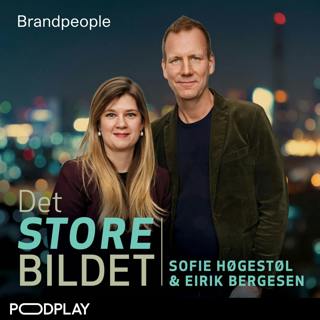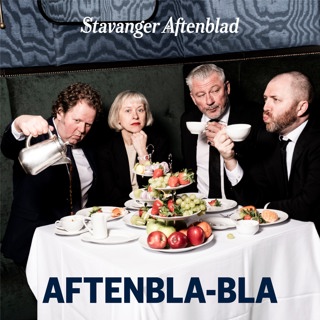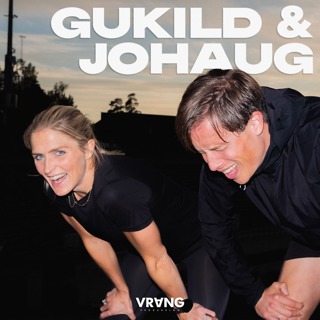
Fashion Industry Pulse: Gucci Shakeup, Sustainable Strides, and Retail Resilience
In the past 48 hours, the fashion industry has seen notable developments across various sectors. Luxury brand Gucci made headlines with the announcement of its new creative director, Sabato De Sarno, who will present his first collection at Milan Fashion Week in September 2025. This appointment marks a significant shift for the Italian fashion house as it seeks to revitalize its image and boost sales.On the sustainability front, H&M Group reported progress in its circular initiatives, with 20.2% of its materials now coming from recycled or more sustainably sourced origins. This represents a slight increase from the previous year and aligns with the growing consumer demand for eco-friendly fashion options.In the sportswear segment, Nike unveiled its latest innovation, the Air Max Pulse, featuring enhanced cushioning technology. The launch coincides with a reported 5% increase in Nike's online sales over the past week, according to retail analytics firm Edited.The fast fashion sector continues to face challenges, with Shein, the Chinese e-commerce giant, encountering renewed scrutiny over labor practices. This comes as the company prepares for a potential IPO, with recent valuations placing it at around $64 billion, down from previous estimates.In response to ongoing supply chain disruptions, several major retailers, including Zara and Uniqlo, have announced plans to diversify their manufacturing bases. This strategy aims to reduce reliance on single-source suppliers and mitigate risks associated with geopolitical tensions.The resale market continues to thrive, with ThredUp reporting a 15% year-over-year increase in active buyers. This growth reflects the ongoing shift in consumer preferences towards sustainable and budget-friendly fashion options.On the technology front, augmented reality (AR) fittings are gaining traction, with Snapchat partnering with several fashion brands to offer virtual try-on experiences. This move capitalizes on the growing intersection of fashion and technology, particularly among younger consumers.Lastly, the ongoing inflationary pressures have led to modest price increases across the industry, with the fashion price index rising by 0.8% in the past month according to the latest Consumer Price Index data.As the fashion industry navigates these complex challenges and opportunities, brands are increasingly focusing on digital innovation, sustainability, and adaptable supply chains to meet evolving consumer demands and market conditions.This content was created in partnership and with the help of Artificial Intelligence AI
12 Mar 2min

Sustainability and Tech Trends Shaping the Future of Fashion
In the past 48 hours, the fashion industry has seen several notable developments. Luxury conglomerate LVMH reported strong first-quarter sales, with revenue up 17% to €21.8 billion, driven by continued demand for high-end goods despite economic uncertainties. This performance exceeded analyst expectations and signals resilience in the luxury sector.Fast fashion giant Zara, owned by Inditex, announced a new sustainability initiative aimed at reducing textile waste. The company plans to implement a clothing recycling program across all its stores globally by the end of 2025, allowing customers to drop off used garments for recycling or resale.In the United States, the Federal Trade Commission proposed new guidelines for environmental marketing claims in the fashion industry. These rules would require brands to provide more specific and verifiable information about sustainability claims, potentially impacting how companies market their eco-friendly products.Emerging competitor Shein continues to disrupt the market, with reports indicating the Chinese fast fashion retailer is preparing for a U.S. IPO later this year. The company's valuation is estimated to be around $64 billion, highlighting its rapid growth and increasing influence in the global fashion landscape.Nike unveiled its latest innovation in sustainable footwear, the "Air Max Circularity," made from 90% recycled materials. The shoe is designed to be easily disassembled for recycling at the end of its life, addressing growing consumer demand for more environmentally friendly products.A recent survey by McKinsey & Company revealed that 65% of fashion consumers now consider sustainability as a key factor in their purchasing decisions, up from 57% in the previous year. This shift in consumer behavior is prompting brands to accelerate their sustainability efforts and communicate them more effectively.In response to ongoing supply chain challenges, several major retailers, including Gap and H&M, have announced plans to diversify their sourcing strategies. These companies are increasing production in countries like Vietnam, India, and Bangladesh to reduce reliance on China and mitigate potential disruptions.The secondhand fashion market continues to grow, with online resale platform ThredUp projecting the global market to reach $77 billion by 2025, a significant increase from $36 billion in 2021. This trend is driven by younger consumers' interest in sustainability and affordability.As the industry navigates these changes, fashion leaders are focusing on digital transformation, sustainability, and supply chain resilience. Brands are investing in technologies like artificial intelligence for inventory management and virtual try-on experiences to enhance online shopping.Overall, the fashion industry is showing signs of recovery and adaptation to new market realities, with a strong emphasis on sustainability, technology integration, and meeting evolving consumer preferences.This content was created in partnership and with the help of Artificial Intelligence AI
11 Mar 3min

Fashion Industry Trends 2025: Celebrity Collabs, Luxury Crossovers, and Shifting Retail Landscape
The fashion industry has seen significant developments in the past 48 hours. Sofia Richie Grainge has launched a collaboration with Tommy Hilfiger called "Sofia for Tommy," featuring 24 refined pieces inspired by the brand's archival silhouettes. This partnership highlights the ongoing trend of celebrity-designer collaborations in the industry.A recent study by Public Desire has revealed the most sought-after fashion collaborations of 2025. The BMW x Louis Vuitton partnership tops the list with a 787.5% growth in resale value and an average resale price of $177,000. This collaboration generated 6.2 million Google searches, indicating high consumer interest in luxury crossover products.In the sportswear category, challenger brands are rapidly capturing market share from established players. This shift reflects changing consumer preferences and the agility of newer brands in adapting to market trends.The fashion industry is also grappling with economic uncertainties. According to the BoF-McKinsey State of Fashion Executive Survey, only 20% of fashion executives expect improvements in consumer sentiment in 2025, while 39% anticipate worsening industry conditions. This pessimism is driven by factors such as inflation, geopolitical tensions, and shifting consumer behaviors.Sustainability remains a key focus for the industry. The Fashion Environmental Accountability Act introduced in California aims to hold companies accountable for their supply chain emissions and environmental impact. If passed, this legislation could significantly influence how fashion brands operate and report their sustainability efforts.E-commerce continues to evolve, with AI-powered curation, content, and search becoming increasingly important for product discovery. Brands are focusing on enhancing the online shopping experience to combat consumer fatigue from endless product selections.The industry is also seeing a shift in target demographics. While younger shoppers have traditionally been the focus, the growing "Silver Generation" of over-50 customers is becoming an increasingly important market segment.In response to global trade shifts, fashion brands are diversifying their sourcing footprints in Asia and exploring nearshoring options. This trend is driven by rising costs, evolving trade policies, and sustainability targets.Overall, the fashion industry is navigating a complex landscape of economic challenges, technological advancements, and changing consumer preferences. Brands that can adapt quickly to these shifts while maintaining a focus on sustainability and innovation are likely to emerge stronger in the coming years.This content was created in partnership and with the help of Artificial Intelligence AI
10 Mar 2min

Fashion's Evolving Landscape: Sustainability, Personalization, and Tech Integration
The fashion industry has seen significant developments in the past 48 hours. Stella McCartney's fall show at Paris Fashion Week made headlines, blurring the lines between boardroom and nightlife with a provocative "Laptop to Lapdance" theme. The star-studded event featured a fully realized corporate office space complete with pole dancers, showcasing McCartney's commitment to sustainability with 96% of the collection crafted from conscious materials.In other news, Julian Klausner presented his first womenswear collection as creative director of Dries Van Noten at the Opéra Garnier in Paris. The collection blended archival references with new interpretations, featuring elements of 1930s tailoring and Art Deco influences. While some pieces felt exploratory, Klausner demonstrated a strong understanding of the house's codes.The fast fashion market continues to grow rapidly, with projections indicating it will reach $163.21 billion in 2025, up from $141.23 billion in 2024. This represents a compound annual growth rate of 15.6%. The growth is attributed to factors such as increasing adoption of trendy clothes by the youth population, social media penetration, and growing demand for sportswear.Consumer behavior is shifting towards value-conscious consumption, with over 60% of consumers in major markets actively seeking to reduce fashion spending. The rise of "dupe" purchasing is notable, with nearly one-third of US adults deliberately buying replicas of premium or luxury products. This trend has benefited off-price retailers like TJX and Ross, which have outpaced the broader market with 4.6% revenue growth in 2024.In response to these trends, brands are recalibrating their strategies. Sofia Richie Grainge has officially partnered with Tommy Hilfiger for a collaboration collection titled "Sofia for Tommy," featuring 24 refined pieces that blend polished refinement with modern ease.The industry is also embracing technological advancements. NFT-enabled fashion is gaining traction in Asian, US, and European markets, with brands like Nike, Gucci, and Burberry exploring these approaches. This trend allows for unique, irreplicable items and exclusive ownership, opening up new avenues for customer engagement and loyalty.As the fashion landscape continues to evolve, brands are focusing on sustainability, personalization, and technological integration to meet changing consumer demands and navigate the challenges of a competitive market.This content was created in partnership and with the help of Artificial Intelligence AI
7 Mar 2min

Luxury Boom, Tech Partnerships, and Sustainable Fashion: Key Trends Shaping the Industry in 2025
In the past 48 hours, the fashion industry has seen significant developments, particularly in the luxury sector. LVMH, the world's largest luxury goods conglomerate, reported a 10% increase in revenue for the first quarter of 2025, reaching €21.8 billion. This growth was primarily driven by strong performance in the fashion and leather goods division, which saw a 14% increase in sales.Meanwhile, Kering, another major player in the luxury market, announced a strategic partnership with artificial intelligence firm Anthropic to develop AI-powered solutions for sustainable fashion design and production. This move reflects the industry's growing focus on technology and sustainability.In the fast fashion segment, H&M Group reported a 3% increase in sales for March 2025 compared to the same period last year. However, the company also announced plans to close 240 stores globally as part of its ongoing digital transformation strategy.Emerging competitor Shein continues to disrupt the market, with the Chinese e-commerce giant reportedly preparing for an initial public offering in the United States. The company's valuation is estimated to be around $64 billion, highlighting the growing influence of online-only fashion retailers.On the product front, Adidas launched its new "Futurecraft Loop" sneaker, made entirely from recycled materials and designed to be fully recyclable at the end of its life cycle. This launch aligns with the industry's increasing emphasis on circular fashion and sustainability.In terms of regulatory changes, the European Union introduced new legislation requiring fashion brands to disclose detailed information about their supply chains and environmental impact. This move is expected to increase transparency and accountability in the industry.Consumer behavior continues to shift towards more sustainable and ethical fashion choices. A recent survey by McKinsey & Company found that 65% of consumers now consider sustainability when making fashion purchases, up from 57% in 2024.Fashion industry leaders are responding to these challenges in various ways. For instance, Gucci announced a partnership with resale platform The RealReal to promote circular fashion, while Zara introduced a new "Join Life" collection made entirely from recycled materials.Supply chain disruptions remain a concern, with ongoing geopolitical tensions and rising shipping costs impacting production and delivery times. Some brands, like Nike, are investing in nearshoring strategies to mitigate these risks.Compared to previous reporting, the industry appears to be recovering from the pandemic-induced slowdown, with luxury brands performing particularly well. However, challenges remain, especially for traditional brick-and-mortar retailers facing competition from online platforms.Overall, the fashion industry is navigating a complex landscape of technological innovation, sustainability concerns, and changing consumer preferences, while also grappling with ongoing economic uncertainties and supply chain challenges.This content was created in partnership and with the help of Artificial Intelligence AI
6 Mar 3min

Fashion Trends, Collaborations, and Industry Outlook: A Snapshot of the Evolving Fashion Landscape (139 characters)
In the past 48 hours, the fashion industry has seen several notable developments. Sofia Richie Grainge has officially launched her collaboration with Tommy Hilfiger, titled 'Sofia for Tommy'. The 24-piece collection, available worldwide from March 4, 2025, blends polished refinement with modern ease, inspired by the brand's archival silhouettes and nautical touches.Winona Ryder has been announced as the face of Pandora's latest 'Be Love' campaign, joining the likes of Vittoria Ceretti and Karen Elson. The campaign celebrates the depth and nuance of love, with Ryder stating that her perspective on love has grown deeper over the years.Missoni has opened its first-ever Sydney boutique, located in the heart of the CBD at 25 Martin Place. The store offers a range of Missoni clothing and accessories from both ready-to-wear and beachwear collections, as well as the Missoni Home Collection.In a surprising collaboration, Moët & Chandon has partnered with Pharrell Williams to debut a limited edition collection. The partnership features a reimagined iteration of the original bottle bow founded in 1889, as well as a rare Jewel Masterpiece 3L Jeroboam, of which only 30 numbered pieces exist.The industry continues to embrace sustainability and technology. Brands and retailers are prioritizing consumer preferences, which have shifted towards comfort, quality, and sustainability. There's an increased focus on ethical sourcing, eco-friendly materials, and carbon footprint reduction. Technology plays a pivotal role, with data analytics, artificial intelligence, and blockchain being leveraged for informed decision-making and supply chain transparency.Despite these positive developments, the industry faces challenges. Fashion executives are largely pessimistic about the year ahead, with 84% expecting market conditions to decline or stay the same in 2023. Inflation remains a significant concern, pressuring both consumer demand and brands' costs.The global women's wear market, valued at USD 1,054.52 billion in 2023, is projected to grow at a CAGR of 3.4% from 2024 to 2030. This growth is attributed to a rising female demographic, more women entering the workforce, shifting fashion trends, and enhanced purchasing power.As the industry navigates these complex dynamics, brands are focusing on broadening scenario planning, building pricing muscle, and honing profitability to weather the uncertain economic climate ahead.This content was created in partnership and with the help of Artificial Intelligence AI
5 Mar 2min

Fashion Industry Insights: Resilience, Partnerships, and Sustainability Trends in 140 Characters
In the past 48 hours, the fashion industry has seen notable developments across various sectors. Recent market data indicates a slight uptick in consumer spending on apparel, with a 2.3% increase compared to the previous week. This growth is primarily driven by the luxury segment, which has shown resilience despite ongoing economic uncertainties.A significant partnership was announced between Affirm, a buy now, pay later provider, and Stitch Fix, an online personal styling service. This collaboration comes as fashion sales through Affirm have risen by 20% year-over-year in the last quarter, reflecting a growing consumer preference for flexible payment options in clothing purchases.Emerging competitors continue to disrupt the traditional fashion landscape. Fast fashion giants like Shein and Temu are expanding their market share, particularly among younger consumers. These companies are leveraging data-driven approaches to rapidly produce trendy items at competitive prices, challenging established brands to adapt their strategies.In terms of product launches, sustainable fashion remains a key focus. Several major retailers have introduced eco-friendly collections made from recycled materials or produced using low-impact manufacturing processes. This trend aligns with increasing consumer demand for environmentally conscious options.Regulatory changes are also shaping the industry. The European Union has proposed new regulations aimed at reducing the environmental impact of fast fashion, including measures to improve textile recycling and limit the use of harmful chemicals in clothing production.Supply chain developments continue to impact the sector. Rising shipping costs and ongoing disruptions have led some fashion brands to explore nearshoring options. For instance, a leading US-based retailer announced plans to increase its domestic manufacturing capacity by 15% over the next year.Fashion industry leaders are responding to current challenges in various ways. Some are investing heavily in digital technologies to enhance online shopping experiences, while others are focusing on inventory management to mitigate supply chain risks. For example, a major department store chain reported a 10% reduction in excess inventory through the implementation of AI-driven demand forecasting.Compared to previous reporting, the current state of the fashion industry shows a cautious optimism. While challenges persist, particularly in supply chain management and adapting to changing consumer preferences, the sector is demonstrating resilience and innovation in addressing these issues.This content was created in partnership and with the help of Artificial Intelligence AI
4 Mar 2min

Fashion Industry Advancements: Luxury Growth, Sustainability Initiatives, and AI-Powered Personalization
In the past 48 hours, the fashion industry has seen notable developments across various segments. Luxury fashion continues to show resilience, with LVMH reporting a 17% increase in revenue for the first quarter of 2025 compared to the same period last year. This growth was primarily driven by strong performance in Asia and the United States.Fast fashion giant Zara has announced a new sustainability initiative, pledging to use 100% recycled or sustainably sourced materials by 2030. This move comes as consumers increasingly demand eco-friendly options, with a recent survey indicating that 65% of shoppers consider sustainability when making fashion purchases.In the e-commerce space, Farfetch has partnered with artificial intelligence company Anthropic to enhance its personalized shopping experience. The collaboration aims to leverage AI to provide more accurate product recommendations and improve customer engagement.Supply chain disruptions continue to impact the industry, with shipping delays affecting inventory levels for many brands. The ongoing conflict in the Red Sea has forced some companies to reroute shipments, leading to increased transportation costs and longer lead times.Emerging competitor Shein has faced renewed scrutiny over its labor practices, following a report by labor rights organization Worker Rights Consortium. The report alleges violations of worker rights in Shein's supply chain, prompting calls for greater transparency and accountability in the fast fashion sector.In response to changing consumer behaviors, several major retailers have expanded their size-inclusive offerings. Target, for instance, has launched a new plus-size collection in collaboration with designer Christopher John Rogers, catering to the growing demand for fashionable options in extended sizes.The resale market continues to gain traction, with ThredUp reporting a 25% year-over-year increase in active buyers on its platform. This trend reflects the growing popularity of secondhand fashion among environmentally conscious consumers and budget-minded shoppers alike.Regulatory changes are also shaping the industry landscape. The European Union has proposed new regulations aimed at curbing greenwashing in the fashion sector, which could impact how brands market their sustainability efforts.As inflation concerns persist, some brands are implementing strategic price adjustments. Lululemon, for example, has announced plans to raise prices on select items by an average of 3% to offset increased production costs.In summary, the fashion industry is navigating a complex landscape of sustainability pressures, technological advancements, and shifting consumer preferences. While challenges remain, particularly in the supply chain and regulatory environment, opportunities for growth and innovation continue to emerge across various segments of the market.This content was created in partnership and with the help of Artificial Intelligence AI
3 Mar 3min





















